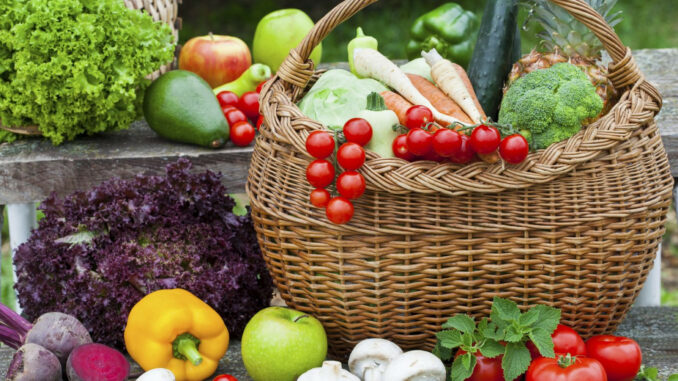
Introduction: Fruits and vegetables are essential components of a healthy diet, providing vital nutrients, fiber, and antioxidants that support overall health and well-being. However, many people struggle to consume an adequate amount of these nutrient-rich foods in their daily diet. In this comprehensive guide, we will explore effective strategies for incorporating more fruits and vegetables into your diet, empowering you to improve your nutrition and achieve your health goals.
Benefits of Fruits and Vegetables: Before delving into strategies for increasing fruit and vegetable intake, it’s important to understand the numerous health benefits associated with these foods. Fruits and vegetables are rich in vitamins, minerals, and phytonutrients that play a crucial role in supporting immune function, reducing the risk of chronic diseases such as heart disease and cancer, and promoting overall health and longevity. Additionally, their high fiber content helps maintain digestive health, aids in weight management, and contributes to feelings of fullness and satiety.
Strategies for Incorporating More Fruits and Vegetables:
- Set Specific Goals: Start by setting specific, achievable goals for increasing your fruit and vegetable intake. Whether it’s aiming to consume a certain number of servings per day or incorporating a variety of colors and types of fruits and vegetables into your meals, having clear objectives can help guide your efforts.
- Plan and Prep Ahead: Take time to plan your meals and snacks for the week, incorporating fruits and vegetables into each meal whenever possible. Prepping fruits and vegetables ahead of time by washing, chopping, and portioning them into convenient containers can make it easier to reach for healthy options when hunger strikes.
- Make Half Your Plate Fruits and Vegetables: Aim to fill half of your plate with fruits and vegetables at each meal. This ensures that you’re getting a generous serving of these nutrient-dense foods while leaving room for other essential food groups such as lean protein and whole grains.
- Experiment with Different Varieties: Explore a variety of fruits and vegetables to discover new flavors and textures. Don’t be afraid to step out of your comfort zone and try exotic or unfamiliar produce options. Incorporating a diverse range of fruits and vegetables into your diet ensures that you’re getting a wide array of nutrients and phytochemicals.
- Sneak Them Into Your Meals: Find creative ways to sneak fruits and vegetables into your favorite dishes. Add leafy greens like spinach or kale to smoothies, soups, and pasta sauces. Incorporate shredded zucchini or carrots into baked goods such as muffins and bread. Use thinly sliced vegetables as a topping for homemade pizzas or wraps.
- Opt for Whole Fruits and Vegetables: While fresh produce is ideal, don’t overlook the convenience of frozen or canned fruits and vegetables. Frozen fruits and vegetables are often just as nutritious as fresh varieties and can be conveniently stored for longer periods. When choosing canned options, opt for varieties packed in water or their own juice without added sugars or salt.
- Make Them the Star of the Show: Designate certain meals or snacks as “fruit and vegetable-focused” to prioritize their consumption. For example, start your day with a colorful fruit salad or vegetable omelet for breakfast. Pack a variety of fresh fruits and vegetables for snacks throughout the day, and enjoy a hearty salad or vegetable stir-fry for dinner.
- Get Creative with Cooking Methods: Experiment with different cooking methods to enhance the flavor and appeal of fruits and vegetables. Roasting, grilling, steaming, and sautéing are all excellent ways to bring out the natural sweetness and texture of produce. Season vegetables with herbs, spices, and healthy fats like olive oil to elevate their taste.
- Keep Healthy Snacks Handy: Keep a supply of fresh fruits and vegetables readily available for snacking throughout the day. Store pre-cut fruits and vegetables in clear containers at eye level in the refrigerator for easy access. Pack portable snacks like apple slices, baby carrots, or grape tomatoes to take with you on the go.
- Lead by Example: Set a positive example for your friends and family by incorporating more fruits and vegetables into your own diet. Encourage loved ones to join you in trying new recipes, exploring farmers’ markets, and enjoying meals together that celebrate the abundance of fresh produce.
Conclusion: Incorporating more fruits and vegetables into your diet is a simple yet powerful way to improve your nutrition and overall health. By setting specific goals, planning ahead, experimenting with different varieties, and getting creative with cooking methods, you can increase your fruit and vegetable intake and reap the numerous health benefits they offer. With dedication, consistency, and a willingness to explore new flavors and textures, you can transform your eating habits and enjoy a diet that is vibrant, delicious, and nourishing.